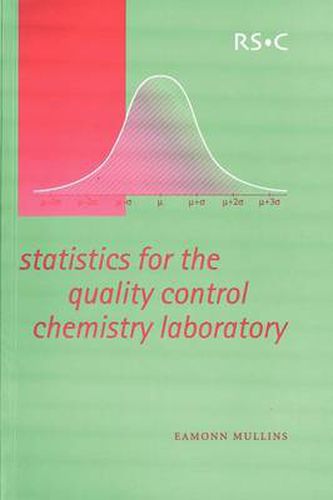Readings Newsletter
Become a Readings Member to make your shopping experience even easier.
Sign in or sign up for free!
You’re not far away from qualifying for FREE standard shipping within Australia
You’ve qualified for FREE standard shipping within Australia
The cart is loading…






Statistical methods are essential tools for analysts, particularly those working in quality control laboratories. This text provides a sound introduction to their use in analytical chemistry, without requiring a strong mathematical background. It emphasises simple graphical methods of data analysis, such as control charts, which are a key tool in Internal laboratory quality control and which are also a fundamental requirement in laboratory accreditation. A large part of the book is concerned with the design and analysis of laboratory experiments, including sample size determination. Practical case studies and many real datasets, from both QC laboratories and the research literature, are used to illustrate the ideas in action. The aim of Statistics for the Quality Control Chemistry Laboratory is to give the reader a strong grasp of the concept of statistical variation in laboratory data and of the value of simple statistical ideas and methods in thinking about and manipulating such data. It should be invaluable to analysts working in QC laboratories in industry, hospitals and public health, and should also be welcomed as a textbook for aspiring analysts in colleges and universities.
$9.00 standard shipping within Australia
FREE standard shipping within Australia for orders over $100.00
Express & International shipping calculated at checkout
Statistical methods are essential tools for analysts, particularly those working in quality control laboratories. This text provides a sound introduction to their use in analytical chemistry, without requiring a strong mathematical background. It emphasises simple graphical methods of data analysis, such as control charts, which are a key tool in Internal laboratory quality control and which are also a fundamental requirement in laboratory accreditation. A large part of the book is concerned with the design and analysis of laboratory experiments, including sample size determination. Practical case studies and many real datasets, from both QC laboratories and the research literature, are used to illustrate the ideas in action. The aim of Statistics for the Quality Control Chemistry Laboratory is to give the reader a strong grasp of the concept of statistical variation in laboratory data and of the value of simple statistical ideas and methods in thinking about and manipulating such data. It should be invaluable to analysts working in QC laboratories in industry, hospitals and public health, and should also be welcomed as a textbook for aspiring analysts in colleges and universities.